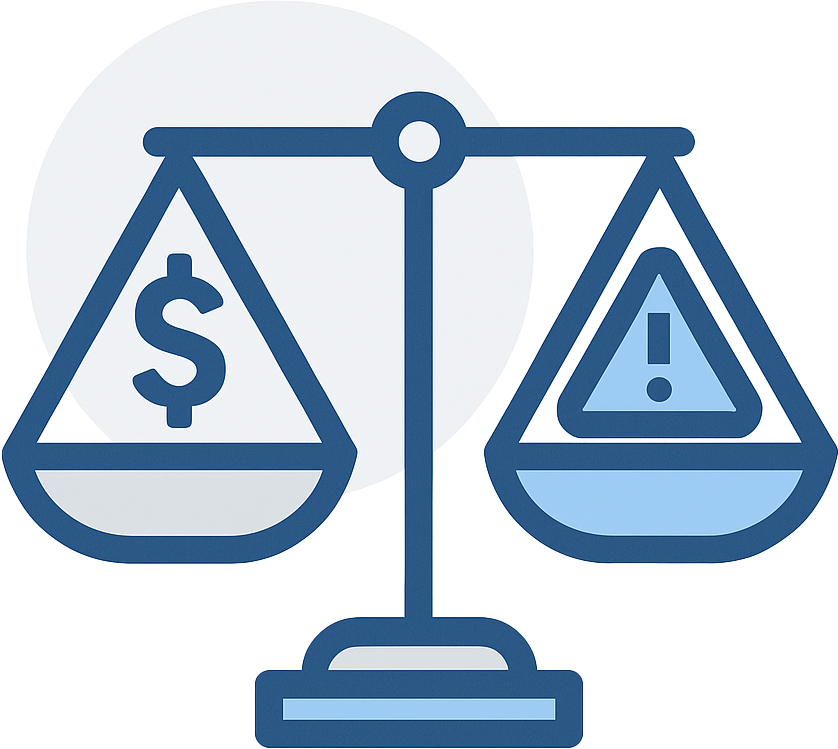Navigating the Impact of PFOA and PFOS Being Designated as Hazardous Substances Under CERCLA
The recent move by the U.S. Environmental Protection Agency (EPA) to classify perfluorooctanoic acid (PFOA) and perfluorooctane sulfonate (PFOS) as hazardous substances under the Comprehensive Environmental Response, Compensation, and Liability Act (CERCLA) is a game-changer for industrial and commercial facilities nationwide.
These chemicals, part of the notorious per- and polyfluoroalkyl substances (PFAS) family, have been staples in various industrial applications. Now, with their new status under CERCLA, facility operators face significant legal and financial implications.
Before we dive in - just know that if you ever have any concerns about your facility's risks of PFOA & PFOS liability - we've got your back. Feel free to reach out to us at RMA for help with PFAS for your business, anytime!
The Backstory: What You Need to Know About PFOA and PFOS
PFOA and PFOS are synthetic chemicals that have been prized for their resistance to heat, water, and oil, making them essential in products like firefighting foams, stain-resistant fabrics, and non-stick cookware.
However, these "forever chemicals" are notoriously difficult to break down in the environment, leading to widespread contamination concerns and a host of regulatory actions due to their potential health risks.

CERCLA’s PFAS Designation: The Implications for Your Facility
CERCLA, often referred to as the "Superfund law", holds parties accountable for the release of hazardous substances into the environment and mandates the cleanup of contaminated sites.
Here's why this is a big deal for businesses like yours:
Now that PFOA and PFOS are classified as hazardous substances under CERCLA, facilities - whether or not they have been involved in the release, use, or handling of these chemicals - are exposed to a range of severe liabilities.
Financial Liability: The Obligation to Clean Up PFAS Contamination
Primarily, this includes the responsibility for the cleanup of contaminated sites. Under CERCLA, even if a facility's contribution to the contamination was minimal or occurred many years ago, operators can still be held accountable for the entire cost of remediation.
This is because CERCLA imposes strict, retroactive liability, meaning that current owners or operators could be on the hook for past actions, regardless of whether they were directly responsible.
The bottom line? Even if your facility didn't directly cause PFAS contamination, CERCLA’s strict, retroactive liability framework means you could still be on the hook for cleanup costs!

Other Liabilities: Lawsuits, Reputational Damage, & More!
The liability isn't limited to the cost of cleanup alone. Facilities could also face legal actions from third parties, including nearby landowners or communities affected by the contamination. These legal actions could result in costly settlements or judgments.
Moreover, being designated as responsible for hazardous substance contamination under CERCLA can lead to reputational damage, regulatory scrutiny, and increased insurance premiums. In some cases, facilities may also be required to reimburse the government for its cleanup efforts or be subjected to punitive damages if they fail to comply with CERCLA’s stringent requirements. The financial and operational impact of these liabilities can be substantial, making it crucial for facilities to understand and manage their exposure to these risks effectively.
Industries with a history of PFAS use—such as chemical manufacturing, metal plating, and those that used firefighting foams—are particularly vulnerable. But the ripple effects extend further, potentially impacting facilities that use products containing PFAS and even certain residential developments, particularly multi-family units.

What to Do Now: Operational Considerations to Stay Ahead
Even if you’re not currently conducting Phase I Environmental Site Assessments (ESAs), (which you really may want to think about!) there are several key steps you should consider during day-to-day operational management of your business:
-
Review Your Facility’s History: Conduct a deep dive into your facility's past operations to identify any historical use of PFOA, PFOS, or other PFAS compounds. This can help you assess potential risks and liabilities.
-
Environmental Audits and Monitoring: Consider voluntary environmental audits to spot potential issues before they escalate. Regular monitoring of soil, groundwater, and air quality around your facility can also provide early warnings of PFAS contamination.
-
Manage Liability Proactively: Work with legal counsel to understand your liabilities under CERCLA and explore possible defenses. You might also consider environmental insurance to mitigate financial risks.
-
Protect Your Employees and Community: Implement best practices to reduce exposure to PFAS for both employees and nearby communities. This could involve updating safety protocols, improving waste management, and investing in cleaner technologies.
-
Stay Compliant: Keep up with evolving federal, state, and local regulations regarding PFAS. In our (slightly biased) opinion, the best way to do this is by hiring an environmental consultant to take care of your compliance needs for you! Staying compliant will help you avoid penalties and reduce the risk of enforcement actions.
-
Consult Environmental Professionals: Engage with experts who specialize in PFAS to gain insights into the latest remediation technologies and risk management strategies. Their expertise is invaluable in navigating these complex challenges. If you have any questions about the impact of PFAS on your operation - reach out to us at RMA!

Looking Ahead: Recommendations for Moving Forward
In light of the new regulatory landscape, here’s what you should do to manage the risks associated with PFOA and PFOS looking ahead into the coming weeks, months, and years:
-
Investigate Proactively: Even if a Phase I ESA isn’t required, consider targeted investigations of areas where PFAS might have been used or stored. Early identification can help in planning remediation efforts.
-
Upgrade Your Facility: Invest in upgrades to waste management systems and production processes to minimize the use and discharge of PFAS. Transitioning to environmentally safer alternatives can help mitigate future liabilities.
-
Plan for the Long Term: Develop a comprehensive strategy for managing PFAS risks, including potential remediation efforts and financial planning for associated costs.

Wrapping Up: What The New PFAS Designation Means for Your Facility
In summary, the designation of PFOA and PFOS as hazardous substances under CERCLA introduces a new level of complexity for industrial and commercial facilities. The implications are far-reaching, with potential financial liabilities and operational challenges that cannot be ignored. To navigate this evolving landscape, proactive management is essential. This involves conducting thorough investigations of your facility’s historical and current practices, understanding the potential risks, and implementing strategic plans to address them. Staying ahead of these changes requires not only compliance but also a commitment to safeguarding your operations and the surrounding environment.
At RMA, we specialize in guiding businesses through regulatory challenges like these. With decades of experience in environmental consulting, we’re equipped to help you understand the full scope of your liabilities and develop tailored strategies to mitigate them. From conducting environmental audits to providing expert advice on risk mitigation & environmental compliance, we’re here to ensure that your facility remains protected in this new regulatory environment. Reach out to us today and let us help you navigate the complexities of CERCLA to secure your business’s future.















